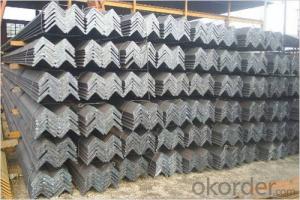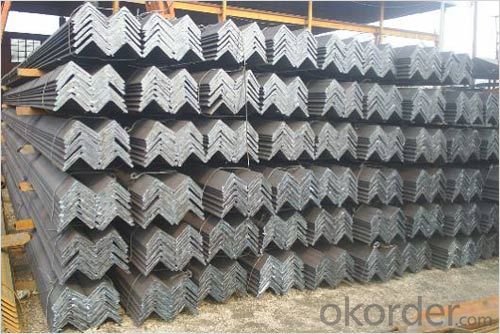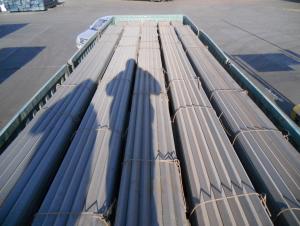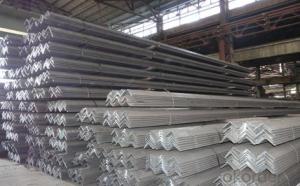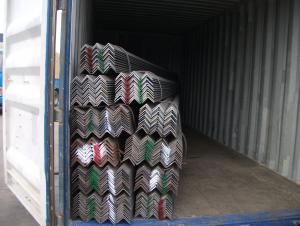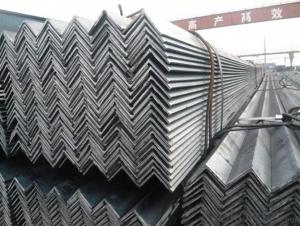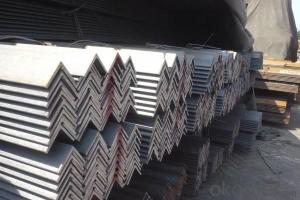Equal Angle Steel Hot rolled JIS G3101 SS400 Mild Steel Angle Iron
- Loading Port:
- Tianjin
- Payment Terms:
- TT or LC
- Min Order Qty:
- 29 m.t.
- Supply Capability:
- 30000 m.t./month
OKorder Service Pledge
OKorder Financial Service
You Might Also Like
Product Description:
OKorder is offering Equal Angle Steel Hot rolled JIS G3101 SS400 Mild Steel Angle Iron at great prices with worldwide shipping. Our supplier is a world-class manufacturer of steel, with our products utilized the world over. OKorder annually supplies products to European, North American and Asian markets. We provide quotations within 24 hours of receiving an inquiry and guarantee competitive prices.
Product Applications:
Equal Angle Steel Hot rolled JIS G3101 SS400 Mild Steel Angle Iron are ideal for structural applications and are widely used in the construction of buildings and bridges, and the manufacturing, petrochemical, and transportation industries.
Product Advantages:
OKorder's Equal Angle Steel Hot rolled JIS G3101 SS400 Mild Steel Angle Iron are durable, strong, and resist corrosion.
Main Product Features:
· Premium quality
· Prompt delivery & seaworthy packing (30 days after receiving deposit)
· Corrosion resistance
· Can be recycled and reused
· Mill test certification
· Professional Service
· Competitive pricing
Product Specifications:
Mild Angle steel
Grade : JIS G3101,SS400/SS540
Size: 25*25--250*250mm
Packing : bulk or container
Delivery time within 25 days .
equal angle steel | unequal angle steel |
specification(mm) | specification(mm) |
25*3/4 | 32*20*3/4 |
30*3/4 | 40*25*3/45*28*3/4 |
40*3/4/5 | 56*36*3/4/5 |
45*3/4/5/6 | 63*40*4/5/6/7 |
50*3/4/5/6 | 70*45*4/5/6/7 |
56*3/4/5/8 | 75*50*5/6/8/10 |
63*4/5/6/8/10 | 80*50*5/6/7/8 |
65*6/7/8/9 | 90*56*5/6/7/8/ |
70*4/5/6/7/8 | 100*63*6/7/8/10 |
75*5/6/7/8/10 | 100*75*6/7/8/9/10/12 |
80*5/6/7/8/10 | 100*80*6/7/8/10 |
90*6/7/8/10/12 | 110*70*6/7/8/10 |
100*6/7/8/10/12/14/16 | 125*75*7/8/9/10/12 |
110*7/8/10/12/14 | 125*80*7/8/10/12 |
120*8/9/10/12 | 140*90*8/10/12/14 |
125*8/10/12/14 | 150*90*9/10/12/15 |
130*9/10/12/13/15 | 150*100*9/12/15 |
140*10/12/14/16 | 160*100*10/12/14/16 |
150*12/15/19 | 180*110*10/12/14/16 |
160*10/12/14/16 | 200*125*12/14/16/18 |
175*12/15 | |
180*12/14/16/18 | |
200*14/16/18/20/24 | |
250*25/35 |
FAQ:
Q1: Why buy Materials & Equipment from OKorder.com?
A1: All products offered byOKorder.com are carefully selected from China's most reliable manufacturing enterprises. Through its ISO certifications, OKorder.com adheres to the highest standards and a commitment to supply chain safety and customer satisfaction.
Q2: How do we guarantee the quality of our products?
A2: We have established an advanced quality management system which conducts strict quality tests at every step, from raw materials to the final product. At the same time, we provide extensive follow-up service assurances as required.
Q3: How soon can we receive the product after purchase?
A3: Within three days of placing an order, we will begin production. The specific shipping date is dependent upon international and government factors, but is typically 7 to 10 workdays.
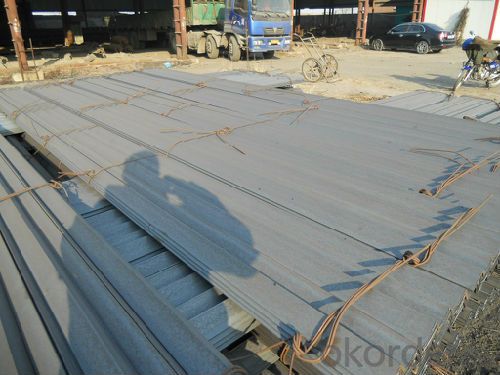
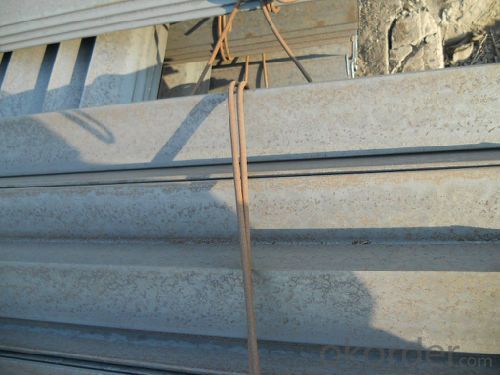
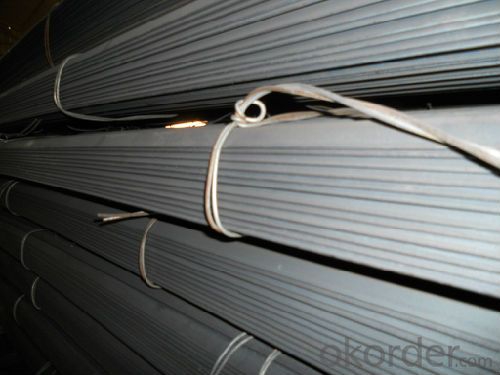
- Q: Can steel angles be used in mezzanine construction?
- Yes, steel angles can be used in mezzanine construction. Steel angles are commonly used as structural elements in construction due to their strength and versatility. In mezzanine construction, steel angles can be used as framing members to support the floor or platform of the mezzanine. They can also be used to create the framework for the stairs or railing systems. Steel angles provide stability and support to the mezzanine structure, making them a popular choice in this type of construction.
- Q: What is the maximum length for a steel angle?
- The maximum length for a steel angle can vary depending on the specific type and size of the angle, as well as the manufacturing capabilities of the steel supplier. Generally, steel angles are available in standard lengths ranging from 20 feet to 40 feet. However, longer lengths may be possible through custom orders or special production processes. It is recommended to consult with a steel supplier or manufacturer to determine the maximum length that is readily available or can be obtained for a specific type of steel angle.
- Q: Can steel angles be drilled or cut?
- Indeed, it is possible to drill or cut steel angles. Steel angles, being a flexible structural material, find extensive use in diverse construction and manufacturing endeavors. It is effortless to drill them for the purpose of creating holes for bolts, screws, or other fastening elements. Moreover, steel angles can be fashioned into specific lengths or shapes by employing tools like saws, plasma cutters, or shears. The capacity to drill or cut steel angles renders them exceedingly adaptable and fitting for an extensive array of applications.
- Q: Where does channel steel use more? Where does angle iron use more?
- The stainless steel angle can be made up of different stress components according to the different structure, and it can also be used as the connecting piece between the components. Widely used in a variety of architectural and engineering structures, such as beams, bridge [/url], transmission tower, lifting transport machinery, ships, industrial furnace, reaction tower, container rack and warehouse shelves.Stainless steel angle steel is constructed with carbon structural steel. It is a simple section steel. It is mainly used in the frame of metal component and workshop. In use, better weldability, plastic deformation and mechanical strength are required. The raw material for producing stainless steel angle steel is low carbon square billet, the finished product is made of stainless steel and the angle iron is delivered by hot rolling forming, normalizing or hot rolling.
- Q: What are the different types of steel angles used in agricultural applications?
- There are several types of steel angles commonly used in agricultural applications, including L-shaped angles, C-shaped angles, and T-shaped angles. These angles are often used to provide structural support, reinforce joints, or serve as framing components in buildings, equipment, or fencing systems on farms.
- Q: Are there any environmental concerns related to the production or disposal of steel angles?
- Yes, there are several environmental concerns related to the production and disposal of steel angles. Firstly, the production of steel angles requires large amounts of energy and raw materials, such as iron ore and coal. The extraction of these resources can have detrimental effects on the environment, including habitat destruction, deforestation, and air and water pollution. Additionally, the manufacturing process itself emits greenhouse gases and other pollutants, contributing to climate change and air pollution. Furthermore, the disposal of steel angles can be problematic. Steel is not easily biodegradable and can take hundreds of years to decompose. Improper disposal, such as landfilling or incineration, can lead to the release of toxic substances and contribute to soil and water contamination. To mitigate these environmental concerns, several measures can be taken. Firstly, improving the efficiency of steel production processes can reduce energy consumption and emissions. The use of recycled steel in the production of steel angles can also help decrease the demand for raw materials and reduce environmental impacts. Additionally, implementing proper waste management and recycling programs can minimize the environmental footprint of steel angle disposal. Overall, while steel angles are essential in various industries and construction, their production and disposal can have significant environmental implications. It is crucial to prioritize sustainable practices and technologies to mitigate these concerns and promote a more environmentally friendly approach to steel angle production and disposal.
- Q: How do you protect steel angles from abrasive wear?
- One way to protect steel angles from abrasive wear is by applying a protective coating or finish, such as paint or a specialized protective coating. This ensures that the steel surface is shielded from direct contact with abrasive materials, reducing the risk of wear and tear. Additionally, using rubber or plastic covers or linings on the steel angles can provide an extra layer of protection against abrasive substances. Regular maintenance and inspection to identify any signs of wear and promptly address them can also help prolong the lifespan of steel angles.
- Q: Can steel angles be used for bracing?
- Yes, steel angles can be used for bracing. Steel angles are commonly used in construction and engineering projects to provide structural support and reinforcement. They are versatile and can be easily welded or bolted into place, making them suitable for various applications, including bracing. Steel angles are typically strong and rigid, which makes them effective in providing stability and resisting lateral forces. They are often used to brace columns, beams, and other structural elements, enhancing the overall strength and stability of the structure.
- Q: Are steel angles resistant to earthquakes?
- Yes, steel angles are resistant to earthquakes. Steel is a strong and durable material that can withstand the forces generated during seismic events. The use of steel angles in construction provides stability and structural integrity, making them a reliable choice for earthquake-resistant buildings.
Send your message to us
Equal Angle Steel Hot rolled JIS G3101 SS400 Mild Steel Angle Iron
- Loading Port:
- Tianjin
- Payment Terms:
- TT or LC
- Min Order Qty:
- 29 m.t.
- Supply Capability:
- 30000 m.t./month
OKorder Service Pledge
OKorder Financial Service
Similar products
Hot products
Hot Searches
Related keywords
